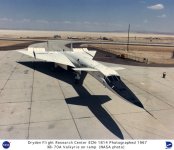
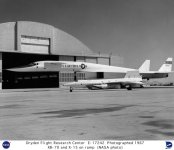
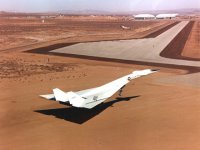
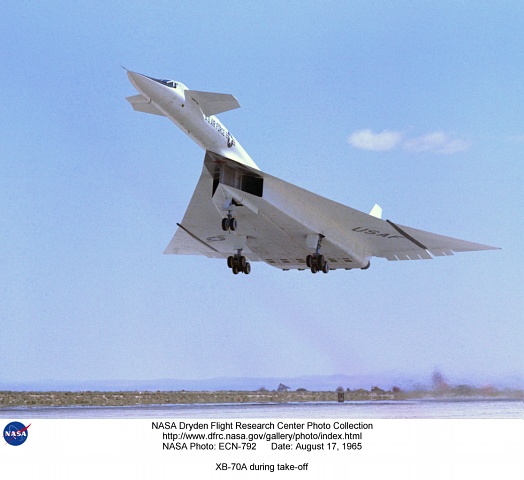
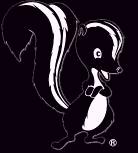 XB-70 VALKYRIE
XB-70 VALKYRIEBack to main In 1959, North American Aviation was awarded a contract to build "Weapons System 110" (WS-110). On paper, the project's goals seemed insurmountable; not just the biggest craft ever to take to the skies, but is was to be the fastest as well, to cruise at 3 times the speed of sound, at a time when no plane had yet flown that fast. The final requirements for the contract were:
Cruise Speed of Mach 3 (2,000mph)

Cruise Altitude of 70,000 feet
50,000 pound payload
A range of 7,500 miles
Sized such that existing runways, hangers, etc. that had already been
built for the B-52 could be used without further modification.Boeing's design was essentially very similar to the later SST; that is, essentially a delta with 3 engines (each mounted in its own pod) under each wing. North American engineers pored through every aerodynamic study they could find, looking for anything that could be applied to a large, triplesonic bomber. They came across a forgotten NACA (now NASA) research paper about "Compression Lift," which involved using the shockwave generated by the nose of the aircraft by trapping it underneath the wing, thereby generating high pressure under the wing, and low pressure above it, for much better lift-to-drag characteristics. In flight, the XB-70 could lower the outer wing sections either 25 degrees for flying from 300 knots to Mach 1.4, or a severe 65 degrees for speeds from Mach 1.4 to Mach 3+. Measuring just a bit over 20 feet at the trailing edge, these wingtips are represent the largest movable aerodynamic device ever used.

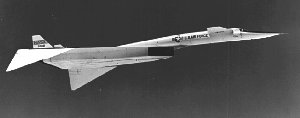
 Less than 6 month after her first flight, AV/2 reached her goal of Mach 3,
on her 17th flight.
Less than 6 month after her first flight, AV/2 reached her goal of Mach 3,
on her 17th flight. Both the USAF and NASA were unsure that AV/1, with her Mach 2.5 speed limitation and general gremlin troubles, could perform the research intended for AV/2. Ultimately, after a few more flights, the Air Force bowed out of the XB-70 program, leaving NASA to carry on additional flights on its own. Although not doing as well as AV/2 would have, the older Valkyrie soldiered on for 33 additional flights, garnering valuable data about high-speed flight.
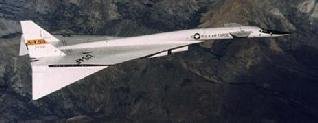 Finally, on February 4th, 1969, AV/1 took off for her eighty-second, and final flight, to the Air
Force Museum at Wright Field, in Dayton, Ohio. Gathering data throughout the entire flight,
Fitz Fulton made a pass over the runway before bringing the XB-70 down for a perfect
landing, then, handing the logbook to the museum curator, officially ended the XB-70 program.
Today, the Valkyrie resides inside the recently built Modern Aviation hanger, finally protected from the ravages of time.
Finally, on February 4th, 1969, AV/1 took off for her eighty-second, and final flight, to the Air
Force Museum at Wright Field, in Dayton, Ohio. Gathering data throughout the entire flight,
Fitz Fulton made a pass over the runway before bringing the XB-70 down for a perfect
landing, then, handing the logbook to the museum curator, officially ended the XB-70 program.
Today, the Valkyrie resides inside the recently built Modern Aviation hanger, finally protected from the ravages of time.